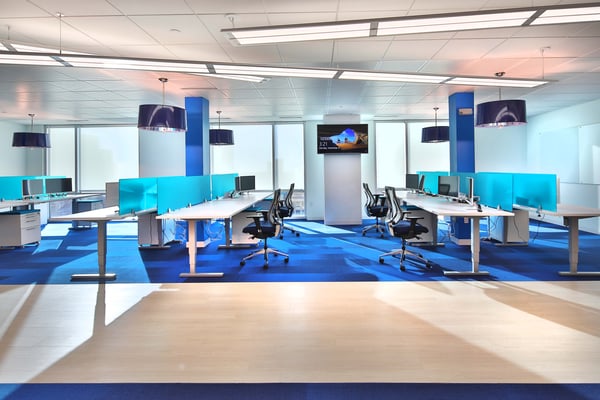
Angelo Adamo grew up in Australia, went on to work with olympians as a sports scientist, and later found his passion in interior design. Today, as a designer and blogger, Adamo faces no shortage of inspiration. He draws from his diverse background, experiences, and surroundings to create memorable and meaningful designs for his clients.
We recently chatted with Adamo to learn more about his design philosophy, how he gets inspired, and how he finds balance between creativity and the business side of design.
Why Modern Designers Must Also be Mentors
The rapid pace of technology and the introduction of social media have drastically impacted the role of the modern interior designer. Now, more than ever, people have access to an abundance of information, with social networks like Instagram and Pinterest providing a channel for people to discover design trends and interact with others who have similar tastes. Moreover, big brands like Amazon and Wayfair have made design more accessible than ever before.
“But what technology and furniture and social media don't do is tap into people's senses,” says Adamo. That’s where the modern designer comes into play. “The designer has to be a coach and a mentor, teaching people how to direct their thoughts and how to relate their emotional status from the past, from the present, and to the future.”
“The designer has to be a coach and a mentor, teaching people how to direct their thoughts and how to relate their emotional status from the past, from the present, and to the future.”
To stand out in a crowded marketplace, designers must be leaders and mentors to their clients; filtering out the noise, anticipating their needs, and creating personalized solutions. “As a designer, my job is to visualize the right way after getting to know the person through the programming phase,” says Adamo. With social media, it’s easy for people to become overwhelmed with choices. “Filtering is the key to being creative,” says Adamo, who doesn’t present clients with any more than three or four representations of a design scheme. “You need to become the mentor and guide them.”
 Designing to Create Memories
Designing to Create Memories
Adamo’s memories of growing up in Australia, his background in sports science, and his interest in aromatherapy have all contributed to his creative process as a designer. “I've based my designs upon people's senses,” says Adamo. “Knowing what their past was like, understanding how colors affect them, what smells and textures trigger certain memories—it all plays a role in creating a successful design.”
Designers like Edith Wharton, Dorothy Draper, and Albert Hadley serve as inspiration for the type of designer Adamo aspires to be. “All of these successful residential designers were mentors. They were design mentors because they became friends with their clients, they became close to them. They understood them,” he says.
“All of these successful residential designers were mentors. They were design mentors because they became friends with their clients, they became close to them. They understood them.”
Before starting any design project, Adamo makes it a priority to get to know the person or people he will be designing for. “It's imperative that you don't concentrate simply on getting the job,” he says. “Getting to know the person is imperative, and once that occurs, then you realize whether this is a good match between the client and the coach/mentor,” says Adamo.
If the project is a good fit, Adamo progresses to the programming phase, where he aims to tap into his client’s senses. Adamo uses surveys to understand client needs, but he also takes a more personal approach, taking clients out to dinner or even traveling with them for extended periods of time to tap into their memories and motivations. It’s then up to him to determine how design can best serve their vision. “Being a coach and a mentor, you have to come up with these solutions,” says Adamo. “I think this will be the way to distinguish between designers who are true professionals, and people who just like doing it because they follow social media and they like decorating.”
 Balancing Business and Creativity
Balancing Business and Creativity
Building relationships with clients and finding inspiration are crucial to developing creative designs, but none of this would be possible without a solid business foundation already in place. “I can have my theories and my way of organizing my designs, but without a proper structure of accounting, money can become an issue,” says Adamo. “When you get connected to clients, the last thing you want is to have an ill feeling because an invoice was incorrect and you've charged them badly.“
“I think Design Manager is the best in its area because it’s so suited for designers.”
To keep the business side of his interior design projects running smoothly, Adamo looks to Design Manager. “I think Design Manager is the best in its area because it’s so suited for designers,” says Adamo. At the end of the day, interior design is a business and a functional accounting system is crucial to building a reputable brand. “Without the Design Manager software, you cannot run a proper business,” says Adamo. It’s this combination of creativity and practicality that make Adamo so successful and enable him to build lasting relationships with clients. To see more of Adamo's work you can visit his blog or catch up with him on Instagram.


